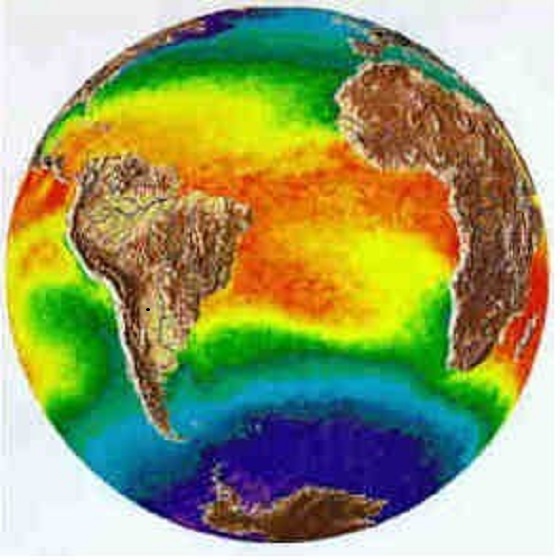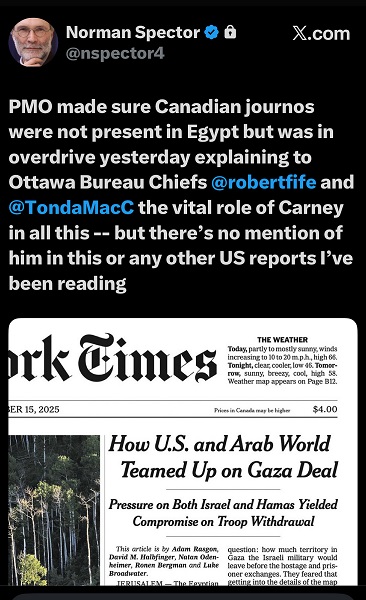Frontier Centre for Public Policy
Global Warming Predictions of Doom Are Dubious

From the Frontier Centre for Public Policy
By Ian Madsen
What if the scariest climate predictions are more fiction than fact?
The International Panel on Climate Change (IPCC) aims to highlight the urgent threats climate change poses. It projects severe consequences, including longer and more intense urban heat waves, as the World Resources Institute noted, along with increased storms, floods, and crop failures. IPCC claims that our current path leads to a temperature increase of at least three degrees Celsius above pre-industrial (circa 1750-1850) levels if the world does not drastically reduce carbon dioxide or just carbon emissions. However, this assessment and the attendant predictions are dubious.
The first uncertainty is the pre-industrial global temperatures. There were no precise thermometers at random sites or in major towns until late in the 19th century. Therefore, researchers use ice cores and lake and sea sediments as proxies. The U.S. National Aeronautics and Space Administration admits that pre-1880 data are limited. It provides many examples showing how even modern temperatures can be incomparable from region to region and from past to present and consequently are adjusted to approximate comparability.
What cannot be explained away is the Medieval Warm Period, which lasted from about 800 AD to around 1300 AD, and the subsequent cooling period that ‘bottomed’ about 1700 AD called the Little Ice Age. Human activity did not cause either one, and they were not merely regional phenomena confined to the North Atlantic and Western Europe. In the Middle Ages, Vikings settled in Greenland and were able to grow crops. The weather cooled dramatically, and they abandoned their colonies in the 15th century. During the Little Ice Age, there were many crop failures and famines in Europe, and the river Thames reliably froze over, with ice thick enough to hold winter fairs on.
Temperatures did not rise significantly until well into the 19th century. Suppose the recent temperature increase between one and one and one-half degrees Celsius is correct. This is only a third of the way toward a more tolerable (i.e., more livable, with less disease and fewer cold-related deaths) climate and cannot be termed “global boiling,” as the Secretary-General of the United Nations called it in 2023.
At three or more degrees of warming, IPCC researchers (“Climate Change 2023 Synthesis Report: Summary for Policymakers Sixth Assessment Report,” “AR6” pp. 15-16) have “high confidence” in more severe hurricanes, typhoons and cyclones; large floods; deadlier heatwaves and droughts; lower glacier-fed river flow; and lower crop yields.
Yet, their predictions are vague and generalized. So far, there are few signs that these calamities are increasing in frequency or intensity – hurricanes, cyclones, and typhoons are not. Indeed, humanity is coping well: The UN’s Food and Agriculture Organization observed that 2024 grain production was the second-highest on record.
Here are a few erroneous predictions the New American found: the United Nations Environmental Program (UNEP)’s 2005 warning of 50 million climate refugees by 2010; the University of East Anglia’s 2000 prediction that the United Kingdom would rarely have snow in winter; and several early-2000s prognostications of the Arctic Ocean being ice-free in summer by 2016 – none has happened. A critique from May of 2020 of the thirty-eight models used to predict futures observed that the predictions of the amalgamated model used by the IPCC consistently and substantially overestimated actual warming.
Longer and hotter heat waves in cities are not the end of the world. They are unpleasant but manageable. Practical methods of urban cooling are spreading globally. Heat-related deaths are still far fewer than those from cold (by a ten-to-one ratio). If it gets hotter occasionally, humanity can and will survive.
Ian Madsen is the Senior Policy Analyst at the Frontier Centre for Public Policy.
Frontier Centre for Public Policy
Ottawa Should Think Twice Before Taxing Churches

From the Frontier Centre for Public Policy
Ottawa has churches in its crosshairs. A federal fiscal squeeze could strip religious organizations of tax breaks, crippling Canada’s community backbone
Proposals to revoke charitable status for faith-based groups would devastate the community services thousands rely on
Canada’s churches, synagogues, temples, mosques and charities like the Salvation Army are at the heart of our communities, offering hope, support and services to thousands. But a storm is brewing in Ottawa that could strip these vital institutions of their charitable status, threatening their very survival—and much of our country’s social fabric.
The 2025 House of Commons Standing Committee on Finance, which makes recommendations to shape the federal budget, dropped a bombshell in its prebudget report, an influential document often used to set priorities for the year ahead. It included two recommendations that could hit religious organizations hard.
The first is that the government revoke the charitable status of pro-life groups. These agencies are being singled out because of the support they provide to pregnant women who do not wish to abort their children.
The second is that the “advancement of religion,” one of the four long-standing categories under which Canadian charities qualify for registration, be eliminated. The recommendation was based on a single proposal by the B.C. Humanist Association, a provincial nonprofit organization in British Columbia that represents atheists, humanists, agnostics and non-religious people.
If included in the next federal budget, these ideas would strip religious organizations across Canada of tax exemptions, the ability to issue donation receipts and, if provinces follow suit, property tax breaks.
Why target these groups?
Ottawa desperately needs the cash. The federal government is on a spending binge of gargantuan proportions with no end in sight. Canada’s balance sheet is drenched in red ink, with no credible plan to address the structural budget deficit, which the C.D. Howe Institute, a Toronto-based policy think tank, estimates will reach a record $92 billion this year. While the tax exemptions amount to only between $1.7 and $3.2 billion annually, the temptation to grab what it can from churches may prove irresistible.
But it’s not just about the dollars. Religious institutions have increasingly faced criticism from secular voices in Ottawa and academia. The Catholic Church, for example, is still facing harsh criticism over its role in Canada’s residential school system and over recent allegations of unmarked graves of Indigenous children at some schools.
As for Protestant and Evangelical churches, public perception casts these institutions as clashing with modern societal norms. Critics claim that churches opposing abortion or prevailing views on human sexuality should be compelled to align with government policies on these issues.
The message seems to be: shape up or ship out. This isn’t just a policy debate; it’s a cultural attack on institutions that have shaped Canada for generations.
Despite the criticism, there are compelling reasons to preserve the charitable status of religious organizations.
First, a recent study by Cardus, a Canadian faith-based think tank, shows that for every dollar of tax exemption, religious groups deliver $10 in community services.
Second, religious congregations offer substantial intangible benefits of immeasurable value. They foster vibrant communities where individuals find friendship, emotional support and spaces to explore questions of meaning and purpose. They also provide opportunities for people to experience a sense of transcendence and spiritual connection.
When the current focus on materialism comes to an end, as it must, many Canadians will turn to the church for guidance in addressing the most profound questions about human existence.
Ottawa needs to get its fiscal house in order, not raid ours. It’s time for Canadians to speak up. Write to your MP, attend community forums and demand that the charitable status for religious organizations be preserved. Doing so will ensure that churches and other places of worship continue to serve Canadians for generations.
Pierre Gilbert, PhD, is an emeritus associate professor at Canadian Mennonite University and a senior fellow at the Frontier Centre for Public Policy. He is the author of Revoking the Charitable Status for the Advancement of Religion: A Critical Assessment and God Never Meant for Us to Die (2020).
Business
Cutting Red Tape Could Help Solve Canada’s Doctor Crisis

From the Frontier Centre for Public Policy
By Ian Madsen
Doctors waste millions of hours on useless admin. It’s enough to end Canada’s doctor shortage. Ian Madsen says slashing red tape, not just recruiting, is the fastest fix for the clogged system.
Doctors spend more time on paperwork than on patients and that’s fueling Canada’s health care wait lists
Canada doesn’t just lack doctors—it squanders the ones it has. Mountains of paperwork and pointless admin chew up tens of millions of physician hours every year, time that could erase the so-called shortage and slash wait lists if freed for patient care.
Recruiting more doctors helps, but the fastest cure for our sick system is cutting the bureaucracy that strangles the ones already here.
The Canadian Medical Association found that unnecessary non-patient work consumes millions of hours annually. That’s the equivalent of 50.5 million patient visits, enough to give every Canadian at least one appointment and likely erase the physician shortage. Meanwhile, the Canadian Institute for Health Information estimates more than six million Canadians don’t even have a family doctor. That’s roughly one in six of us.
And it’s not just patients who feel the shortage—doctors themselves are paying the price. Endless forms don’t just waste time; they drive doctors out of the profession. Burned out and frustrated, many cut their hours or leave entirely. And the foreign doctors that health authorities are trying to recruit? They might think twice once they discover how much time Canadian physicians spend on paperwork that adds nothing to patient care.
But freeing doctors from forms isn’t as simple as shredding them. Someone has to build systems that reduce, rather than add to, the workload. And that’s where things get tricky. Trimming red tape usually means more Information Technology (IT), and big software projects have a well-earned reputation for spiralling in cost.
Bent Flyvbjerg, the global guru of project disasters, and his colleagues examined more than 5,000 IT projects in a 2022 study. They found outcomes didn’t follow a neat bell curve but a “power-law” distribution, meaning costs don’t just rise steadily, they explode in a fat tail of nasty surprises as variables multiply.
Oxford University and McKinsey offered equally bleak news. Their joint study concluded: “On average, large IT projects run 45 per cent over budget and seven per cent over time while delivering 56 per cent less value than predicted.” If that sounds familiar, it should. Canada’s Phoenix federal payroll fiasco—the payroll software introduced by Ottawa that left tens of thousands of federal workers underpaid or unpaid—is a cautionary tale etched into the national memory.
The lesson isn’t to avoid technology, but to get it right. Canada can’t sidestep the digital route. The question is whether we adapt what others have built or design our own. One option is borrowing from the U.S. or U.K., where electronic health record (EHR) systems (the digital patient files used by doctors and hospitals) are already in place. Both countries have had headaches with their systems, thanks to legal and regulatory differences. But there are signs of progress.
The U.K. is experimenting with artificial intelligence to lighten the administrative load, and a joint U.K.-U.S. study gives a glimpse of what’s possible:
“… AI technologies such as Robotic Process Automation (RPA), predictive analytics, and Natural Language Processing (NLP) are transforming health care administration. RPA and AI-driven software applications are revolutionizing health care administration by automating routine tasks such as appointment scheduling, billing, and documentation. By handling repetitive, rule-based tasks with speed and accuracy, these technologies minimize errors, reduce administrative burden, and enhance overall operational efficiency.”
For patients, that could mean fewer missed referrals, faster follow-up calls and less time waiting for paperwork to clear before treatment. Still, even the best tools come with limits. Systems differ, and customization will drive up costs. But medicine is medicine, and AI tools can bridge more gaps than you might think.
Run the math. If each “freed” patient visit is worth just $20—a conservative figure for the value of a basic appointment—the payoff could hit $1 billion in a single year.
Updating costs would continue, but that’s still cheap compared to the human and financial toll of endless wait lists. Cost-sharing between provinces, Ottawa, municipalities and even doctors themselves could spread the risk. Competitive bidding, with honest budgets and realistic timelines, is non-negotiable if we want to dodge another Phoenix-sized fiasco.
The alternative—clinging to our current dysfunctional patchwork of physician information systems—isn’t really an option. It means more frustrated doctors walking away, fewer new ones coming in, and Canadians left to languish on wait lists that grow ever longer.
And that’s not health care—it’s managed decline.
Ian Madsen is a senior policy analyst at the Frontier Centre for Public Policy.
-

 Alberta1 day ago
Alberta1 day agoClick here to help choose Alberta’s new licence plate design
-

 National1 day ago
National1 day agoDemocracy Watch Renews Push for Independent Prosecutor in SNC-Lavalin Case
-

 Business1 day ago
Business1 day agoOver two thirds of Canadians say Ottawa should reduce size of federal bureaucracy
-

 Business2 days ago
Business2 days agoTrump Admin Blows Up UN ‘Global Green New Scam’ Tax Push, Forcing Pullback
-

 Business2 days ago
Business2 days agoTrump Blocks UN’s Back Door Carbon Tax
-

 Media1 day ago
Media1 day agoCanada’s top Parliamentary reporters easily manipulated by the PMO’s “anonymous sources”
-

 Red Deer2 days ago
Red Deer2 days agoYour last minute election prep: Common Sense Red Deer talks to the candidates
-

 Agriculture1 day ago
Agriculture1 day agoIs the CFIA a Rogue Agency or Just Taking Orders from a Rogue Federal Government?





